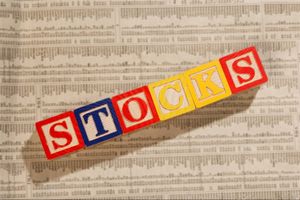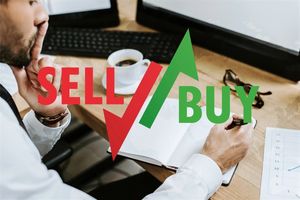
Denim clothing company Levi's (NYSE: LEVI) missed Wall Street’s revenue expectations in Q1 CY2025, with sales falling 2% year on year to $1.53 billion. Its non-GAAP profit of $0.38 per share was 35.2% above analysts’ consensus estimates.
Is now the time to buy Levi's? Find out by accessing our full research report, it’s free.
Levi's (LEVI) Q1 CY2025 Highlights:
- Revenue: $1.53 billion vs analyst estimates of $1.54 billion (2% year-on-year decline, 0.8% miss)
- Adjusted EPS: $0.38 vs analyst estimates of $0.28 (35.2% beat)
- Adjusted EBITDA: $253.1 million vs analyst estimates of $205.2 million (16.6% margin, 23.3% beat)
- Management reiterated its full-year Adjusted EPS guidance of $1.23 at the midpoint
- Operating Margin: 12.5%, up from 0% in the same quarter last year
- Free Cash Flow was -$14.1 million, down from $214.4 million in the same quarter last year
- Constant Currency Revenue rose 9% year on year (-7.7% in the same quarter last year)
- Market Capitalization: $5.50 billion
Company Overview
Credited for inventing the first pair of blue jeans in 1873, Levi's (NYSE: LEVI) is an apparel company renowned for its iconic denim products and classic American style.
Apparel and Accessories
Thanks to social media and the internet, not only are styles changing more frequently today than in decades past but also consumers are shifting the way they buy their goods, favoring omnichannel and e-commerce experiences. Some apparel and accessories companies have made concerted efforts to adapt while those who are slower to move may fall behind.
Sales Growth
Reviewing a company’s long-term sales performance reveals insights into its quality. Any business can put up a good quarter or two, but the best consistently grow over the long haul. Regrettably, Levi’s sales grew at a weak 1.6% compounded annual growth rate over the last five years. This was below our standards and is a poor baseline for our analysis.
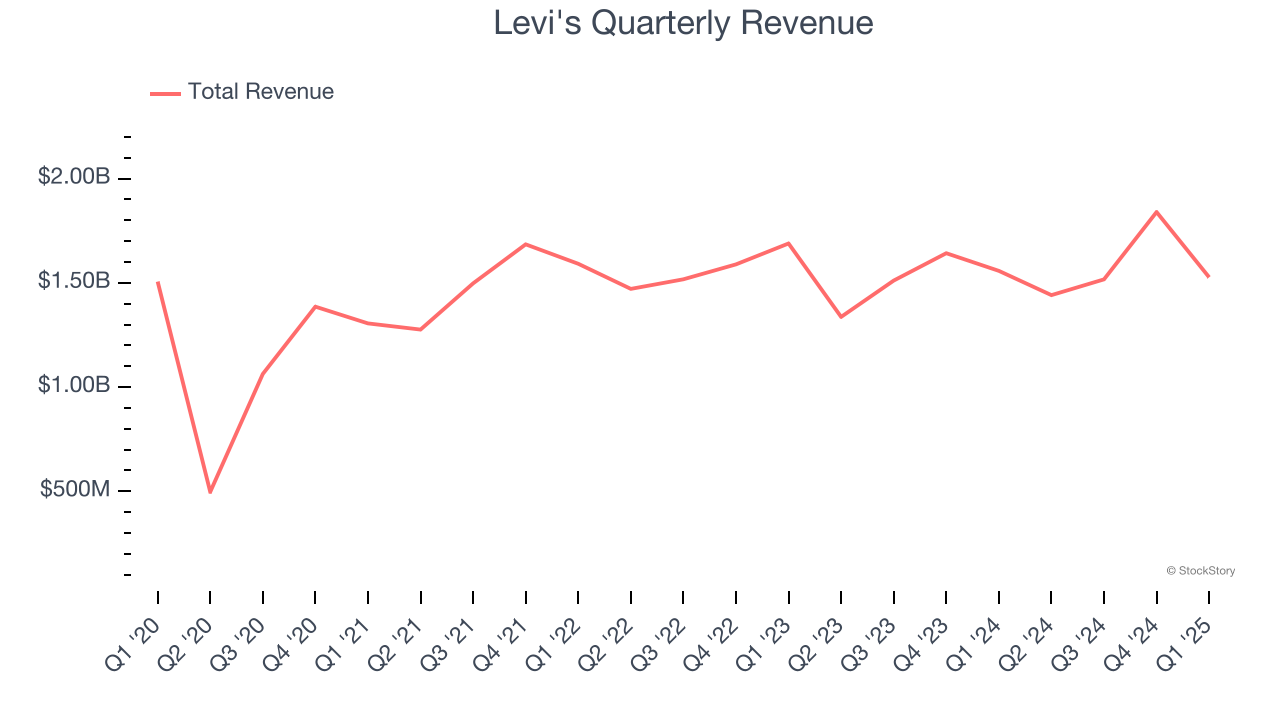
We at StockStory place the most emphasis on long-term growth, but within consumer discretionary, a stretched historical view may miss a company riding a successful new product or trend. Levi’s recent performance shows its demand has slowed as its revenue was flat over the last two years. 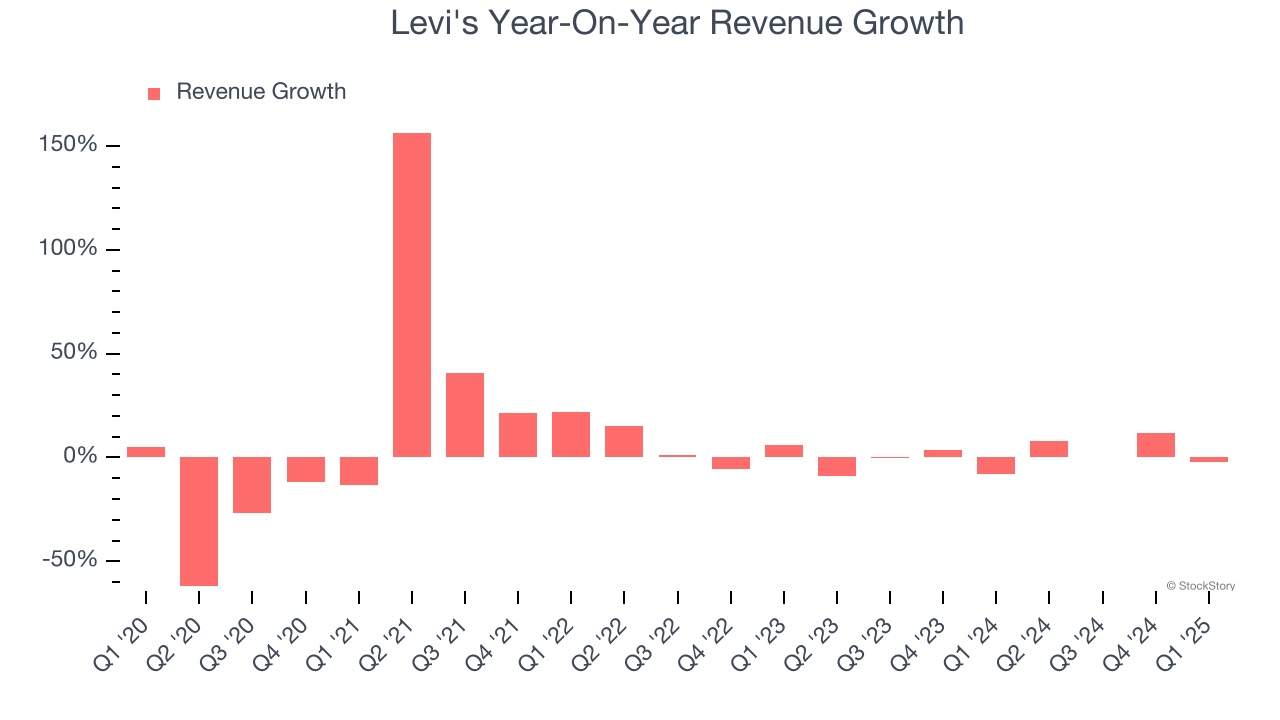
Levi's also reports sales performance excluding currency movements, which are outside the company’s control and not indicative of demand. Over the last two years, its constant currency sales averaged 1.4% year-on-year growth. Because this number aligns with its normal revenue growth, we can see that Levi's has properly hedged its foreign currency exposure. 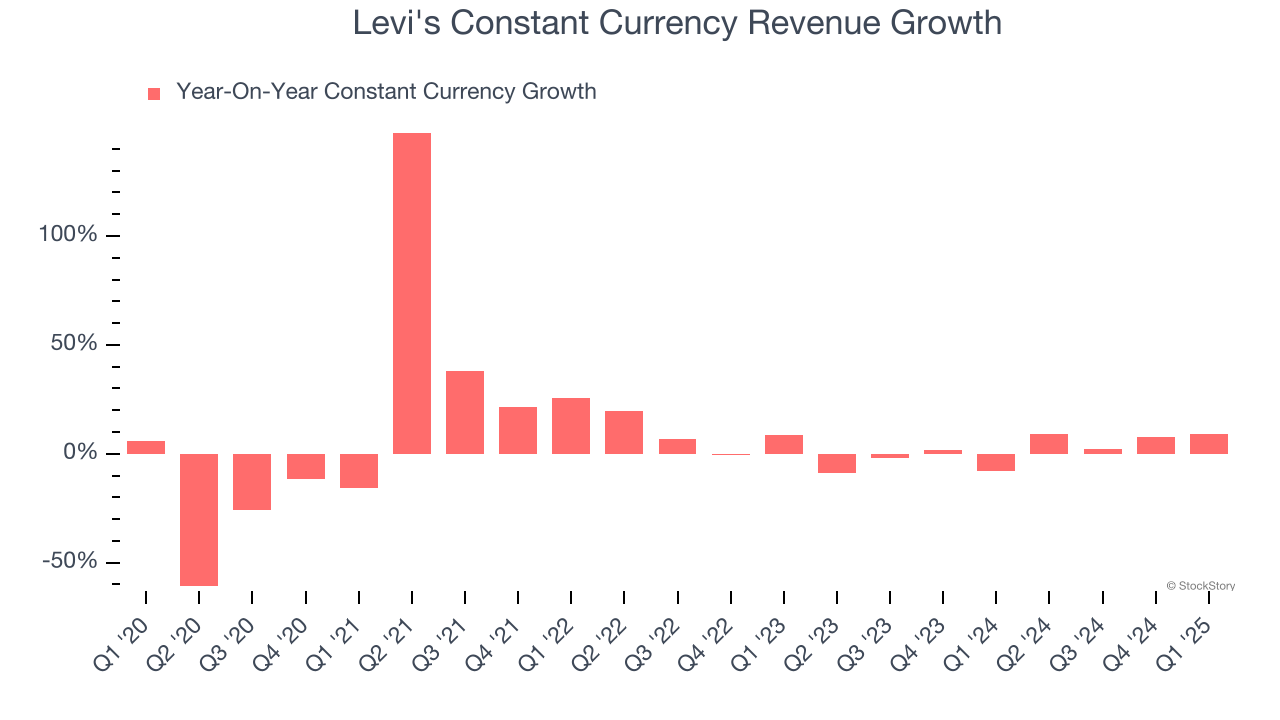
This quarter, Levi's missed Wall Street’s estimates and reported a rather uninspiring 2% year-on-year revenue decline, generating $1.53 billion of revenue.
Looking ahead, sell-side analysts expect revenue to remain flat over the next 12 months. This projection is underwhelming and implies its newer products and services will not accelerate its top-line performance yet.
Here at StockStory, we certainly understand the potential of thematic investing. Diverse winners from Microsoft (MSFT) to Alphabet (GOOG), Coca-Cola (KO) to Monster Beverage (MNST) could all have been identified as promising growth stories with a megatrend driving the growth. So, in that spirit, we’ve identified a relatively under-the-radar profitable growth stock benefiting from the rise of AI, available to you FREE via this link.
Operating Margin
Operating margin is an important measure of profitability as it shows the portion of revenue left after accounting for all core expenses – everything from the cost of goods sold to advertising and wages. It’s also useful for comparing profitability across companies with different levels of debt and tax rates because it excludes interest and taxes.
Levi’s operating margin has risen over the last 12 months and averaged 5.3% over the last two years. The company’s higher efficiency is a breath of fresh air, but its suboptimal cost structure means it still sports lousy profitability for a consumer discretionary business.
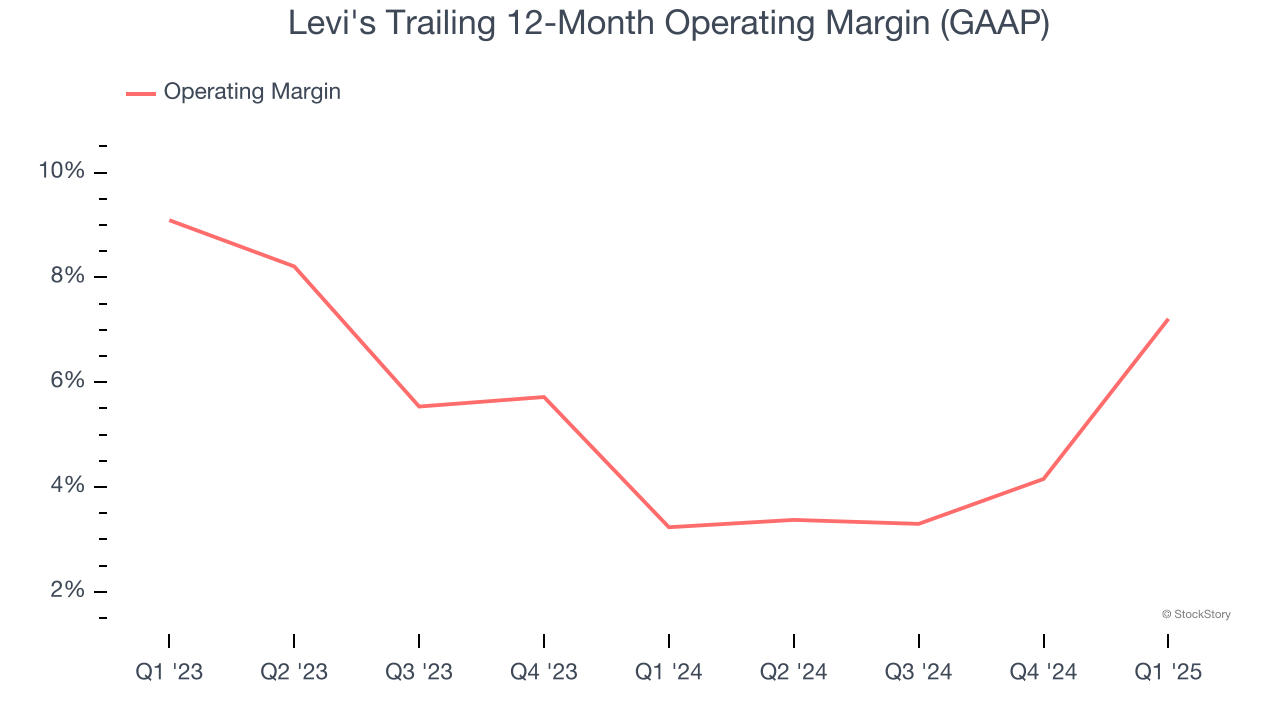
In Q1, Levi's generated an operating profit margin of 12.5%, up 12.6 percentage points year on year. This increase was a welcome development, especially since its revenue fell, showing it was more efficient because it scaled down its expenses.
Earnings Per Share
We track the long-term change in earnings per share (EPS) for the same reason as long-term revenue growth. Compared to revenue, however, EPS highlights whether a company’s growth is profitable.
Levi’s EPS grew at an unimpressive 3.9% compounded annual growth rate over the last five years. This performance was better than its flat revenue but doesn’t tell us much about its business quality because its operating margin didn’t expand.
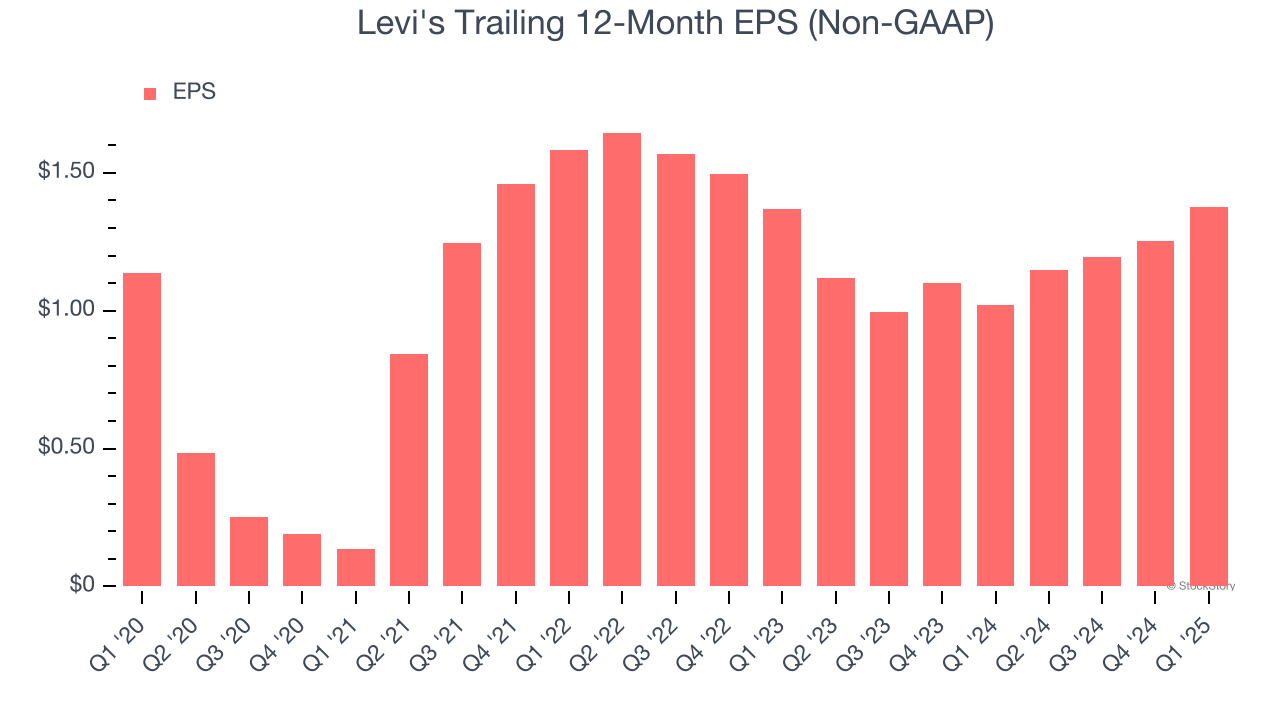
In Q1, Levi's reported EPS at $0.38, up from $0.26 in the same quarter last year. This print easily cleared analysts’ estimates, and shareholders should be content with the results. Over the next 12 months, Wall Street expects Levi’s full-year EPS of $1.38 to shrink by 4%.
Key Takeaways from Levi’s Q1 Results
We were impressed by how significantly Levi's blew past analysts’ constant currency revenue expectations this quarter. We were also excited its EPS and EBITDA outperformed Wall Street’s estimates by a wide margin. On the other hand, its full-year EPS guidance fell short. Overall, we think this was still a decent quarter with some key metrics above expectations. The stock remained flat at $13.40 immediately following the results.
Should you buy the stock or not? What happened in the latest quarter matters, but not as much as longer-term business quality and valuation, when deciding whether to invest in this stock. We cover that in our actionable full research report which you can read here, it’s free.



